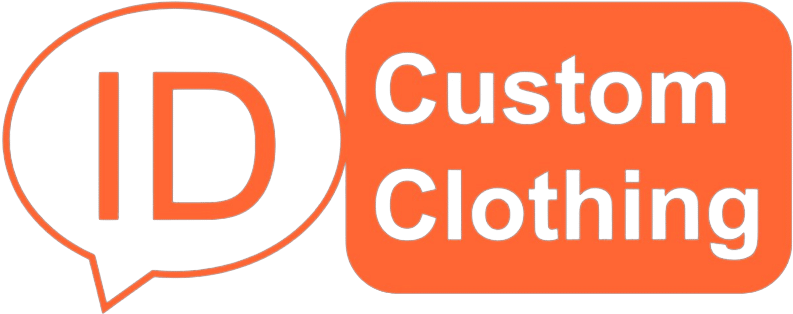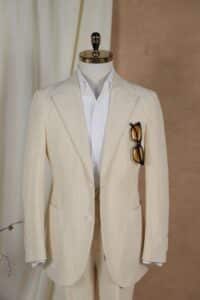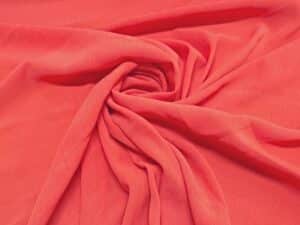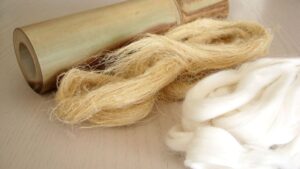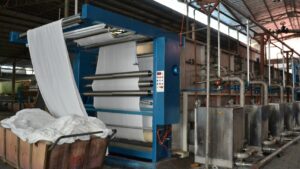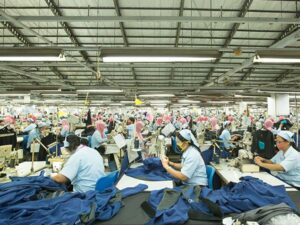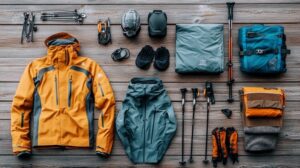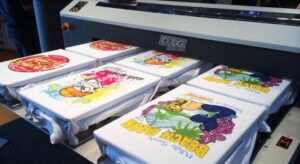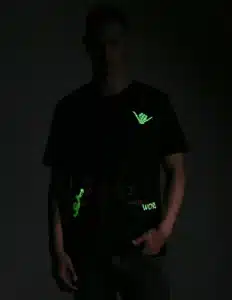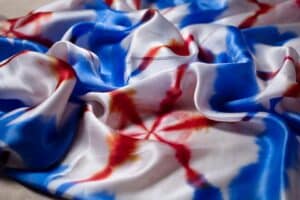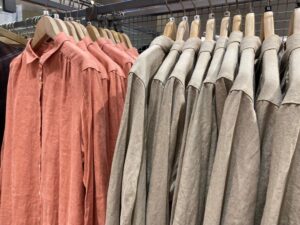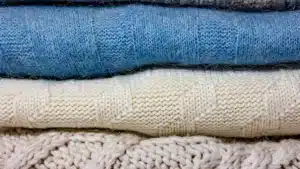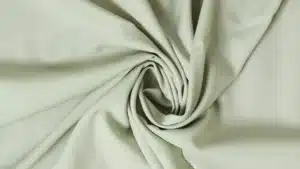
Starting a clothing brand is exciting, but finding the right clothing manufacturers for startups can make or break your journey. The right partner doesn’t just produce your designs - they shape your brand’s reputation and future. High-quality products build trust, keep customers coming back, and position your brand as reliable. Plus, consistent quality reduces returns and boosts satisfaction.
Key Takeaways
Know what your startup needs before picking a manufacturer. Decide the clothing type and how much help you want.
Look for manufacturers online or at trade shows. Good connections can create better teamwork.
Check manufacturers by looking at their work and samples. This helps you see if their quality is good enough.
Talk clearly with your manufacturer. Sharing updates and goals builds trust and teamwork.
Keep your designs and brand safe with legal tools like trademarks. This protects your business from being copied.
Define Your Startup’s Needs
Before diving into garment manufacturing, it’s essential to define your startup’s production needs. This step helps you identify the right clothing manufacturer and ensures your vision aligns with their capabilities. Let’s break it down.
Types of Clothing Manufacturers
When it comes to clothing manufacturers for startups, you’ll typically encounter two main types:
CMT Manufacturers (Cut, Make, Trim): These manufacturers focus on cutting fabric, sewing garments, and adding trims. They require you to provide the fabric, patterns, and designs. If you want more control over the process, this option works well. However, it demands hands-on involvement.
Full-Package Manufacturers: These manufacturers handle everything from sourcing materials to delivering finished products. They’re ideal if you want a hassle-free experience. They can even assist with design and branding, making them a popular choice for startups.
Choosing between these types of clothing manufacturers depends on your resources and how much involvement you want in the production process.
Tip: If you’re new to the industry, full-package manufacturers can save you time and effort. They simplify operations and let you focus on growing your brand.
Determining Product Type and Design
Your product type and design define your brand’s identity. Start by thinking about your target audience. What do they need? Are you creating functional outdoor wear, trendy streetwear, or sustainable options? Balancing functionality and aesthetics is key. A product should look great and serve its purpose.
Sustainability is another factor to consider. Many consumers now prefer eco-friendly apparel. Designing with sustainability in mind not only helps the planet but also boosts your brand’s appeal. Remember, investing in good design pays off. It builds customer loyalty and strengthens your reputation.
Assessing Production Volume and Budget
Understanding your production needs is crucial. Ask yourself: How many pieces do I need? Startups often face challenges with minimum order quantities (MOQs). Some manufacturers, like Identity Custom Clothing, offer low MOQs (at 100 pieces), which is perfect for small-scale production.
Budget is another big factor. Domestic clothing manufacturers may have higher costs but offer faster turnaround times and better communication. On the other hand, international manufacturers provide lower costs and access to specialized skills. Weigh the pros and cons based on your priorities.
Note: Creating a shortlist of potential manufacturers can help you compare costs, capabilities, and services. This step ensures you find the right fit for your startup.
Researching Potential Manufacturers
Finding the right clothing manufacturers for startups starts with good research. Knowing where to look can save you time and help you connect with reliable partners. Let me walk you through some of the best ways to get started.
Online Directories and Marketplaces
Online directories are a goldmine when you’re researching potential manufacturers. They make it easy to compare options and find suppliers that match your needs. Here’s a quick breakdown of some popular directories:
Directory | Introduction |
|---|---|
Alibaba is one of the world's largest e-commerce platforms, connecting businesses globally. It offers a vast range of products from suppliers, primarily in China, catering to both B2B and B2C markets. Alibaba is known for its extensive product categories and competitive pricing. | |
Made-in-China is a leading B2B platform specializing in connecting international buyers with Chinese manufacturers and suppliers. It offers a wide array of products, from machinery to consumer goods, and is known for its user-friendly interface and verified supplier system. | |
The Hong Kong Trade Development Council (HKTDC) is a platform that promotes Hong Kong as a gateway for international trade. It offers trade fairs, online marketplaces, and business matching services to connect global buyers with suppliers in Hong Kong and mainland China. | |
Global Sources is a platform that facilitates trade between suppliers and buyers worldwide. It focuses on electronics, hardware, fashion and outdoor clothing, offering trade shows, online marketplaces, and sourcing magazines to help businesses connect. | |
Thomasnet is a North American B2B platform that connects industrial buyers with suppliers. It specializes in providing detailed company profiles, product information, and CAD drawings, making it a valuable resource for sourcing industrial and manufacturing products. | |
Kompass is a global B2B directory that helps businesses find suppliers, manufacturers, and service providers. It offers a comprehensive database of companies across various industries, along with detailed contact information and business profiles. | |
Maker's Row is a platform designed to connect American brands with U.S.-based manufacturers. It focuses on simplifying the manufacturing process by providing tools and resources to help businesses find the right production partners. | |
Fibre2Fashion is a leading B2B platform for the textile, apparel, and fashion industries. It offers a wide range of services, including market intelligence, sourcing solutions, and industry news, catering to businesses involved in textiles and apparel. | |
Europages is a European B2B directory that connects businesses across Europe and beyond. It offers a vast database of companies, products, and services, making it easier for businesses to find partners and suppliers within the European market. |
These directories are a great starting point if you’re wondering where to find clothing manufacturers. I recommend narrowing your search by filtering for location, minimum order quantities, or specific product types.
Trade Shows and Industry Events
Attending trade shows is one of best ways to connect with manufacturers. It’s not just about finding suppliers - it’s also about building relationships. Here’s why trade shows are worth your time:
Develop strong connections through face-to-face interactions.
Compare and see what’s working for others.
Discover new marketing tactics.
Stay informed about industry trends and future opportunities.
If you’re looking for clothing factories domestically or abroad, trade shows are a fantastic way to meet manufacturers in person. Plus, you’ll leave with valuable insights about the industry.
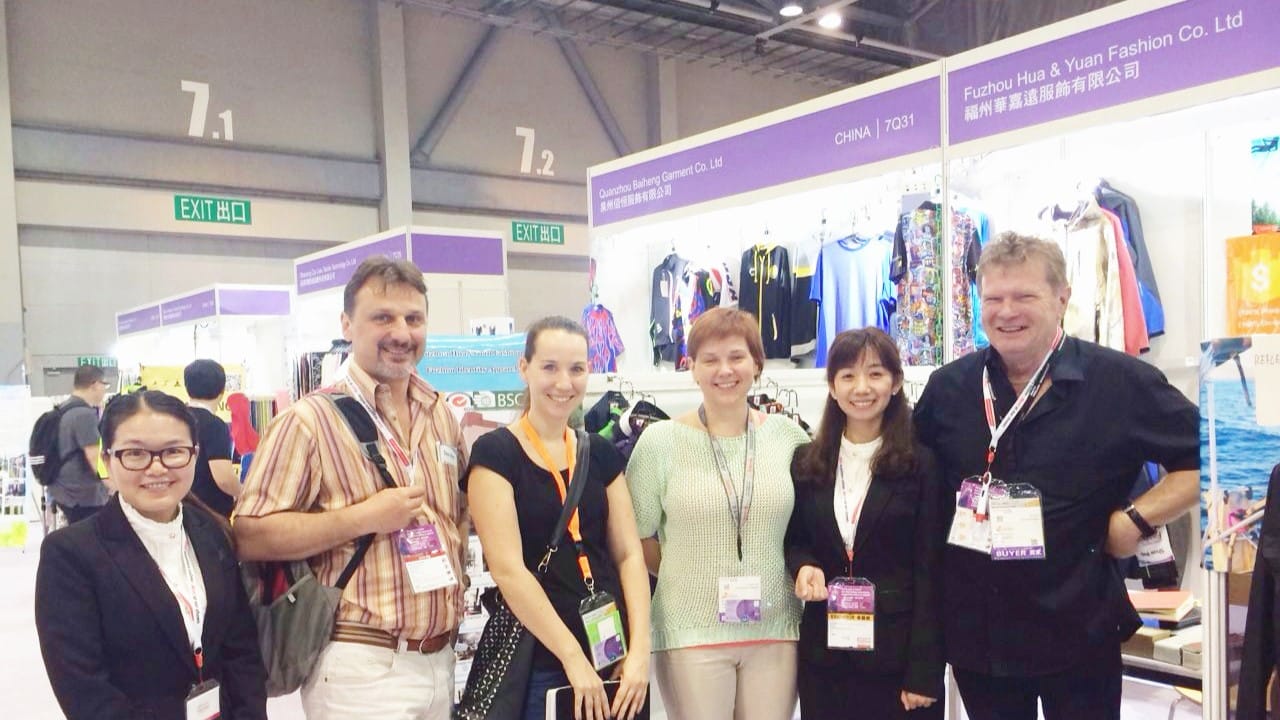
Here’s a quick breakdown of some popular tradeshows for fashion and outdoor clothing:
Tradeshow | Introduction |
|---|---|
Sourcing at MAGIC - Las Vegas | Focus: Apparel, footwear, accessories, and fashion trends. Highlights: One of the largest fashion trade shows in the world, featuring men’s, women’s, and children’s clothing. It includes sections like PROJECT (contemporary clothing) and SOURCING (manufacturing and supply chain). |
Canton Fair - Guangzhou | The Canton Fair, officially known as the China Import and Export Fair, is one of the largest and most comprehensive trade shows in the world. As a key platform for international trade, the Canton Fair connects global buyers with Chinese manufacturers and suppliers, offering opportunities for sourcing, networking, and exploring the latest market trends. It is renowned for its scale, diversity, and influence in global trade. |
ISPO - Munich | Focus: Outdoor sports, apparel, and equipment. Highlights: A leading global trade show for outdoor and sports industries, showcasing the latest trends in outdoor clothing, footwear, and gear. It also includes an awards program for innovative products. |
Outdoor Retailer - Salt Lake City | Focus: Outdoor apparel, gear, and equipment. Highlights: One of the largest and most influential outdoor trade shows in the world, featuring brands like Patagonia, The North Face, and Columbia. It also emphasizes sustainability and innovation in outdoor products. |
Focus: Fabrics, textiles, and apparel sourcing. Highlights: A key event for sourcing materials and connecting with global suppliers, catering to both high-fashion and mass-market brands. | |
OutDoor by ISPO - Munich | Focus: Outdoor apparel, equipment, and innovation. Highlights: A spin-off of ISPO Munich, this trade show is dedicated to outdoor clothing and gear, with a strong emphasis on sustainability and technological advancements. |
IWA OutdoorClassics - Nuremberg | IWA OutdoorClassics is one of the world’s leading trade shows for hunting, shooting, and outdoor equipment. It serves as a premier platform for manufacturers, retailers, and industry professionals to showcase and discover the latest innovations in outdoor clothing, gear, and accessories. |
Première Vision - Paris | Focus: Fabrics, textiles, leather, and fashion design. Highlights: A leading trade show for high-end fashion materials, attracting designers and brands seeking innovative fabrics and trends. |
Apparel Textile Sourcing - Toronto, Miami, Berlin | Focus: Apparel, textiles, and sourcing. Highlights: A global trade show connecting brands with manufacturers and suppliers. |
Munich Fabric Start - Munich | Focus: Fabrics, textiles, and sustainable fashion. Highlights: A leading European trade show for sourcing high-quality materials and exploring sustainable innovations. |
Networking and Referrals
Sometimes, the best recommendations come from people you know. Networking can open doors to trustworthy manufacturers. Here’s how you can make the most of it:
Join fashion industry groups and forums to gain insights.
Connect with other clothing brand owners and designers for referrals.
Attend industry events and participate in online communities to meet experienced professionals.
Word-of-mouth referrals are powerful. They give you confidence in a manufacturer’s reliability and help you avoid potential pitfalls.
Evaluating Clothing Manufacturers for Startups

Finding the right partner for your clothing brand isn’t just about availability—it’s about ensuring they align with your vision and standards. Let me walk you through how to evaluate potential clothing manufacturers effectively.
Reviewing Portfolios and Samples
When I evaluate a manufacturer, the first thing I do is check their portfolio. It gives me a glimpse into their past work and helps me understand their range. Are they experienced in producing the type of apparel I need? For example, if I’m looking for outdoor wear, I want to see examples of jackets or windbreakers they’ve made before.
Samples are equally important. They let me assess the quality of craftsmanship and materials firsthand. I always request a sample before committing to a larger order. This step ensures the final product meets my expectations.
Here’s a quick checklist I use when reviewing portfolios and samples:
Look for consistency in quality and attention to detail.
Check if their previous projects align with your brand’s style.
Evaluate their communication and ability to meet deadlines.
Confirm their minimum order quantities (MOQs) and pricing.
Ask about their quality control measures and ethical practices.
Tip: Creating a shortlist of manufacturers based on their portfolios can save you time and help you focus on the best options.
Assessing Expertise and Capabilities
Not all manufacturers are created equal. Some specialize in specific types of apparel, while others offer a broader range. I always ask about their expertise to ensure they can handle my production needs. For startups, this is especially important during the production and development transition phase.
I also look at their production capabilities. Can they scale up as my business grows? Do they have the right equipment and skilled workers? These questions help me gauge whether they’re a good long-term partner.
Pro Tip: If you’re considering clothing factories domestically, you might benefit from faster communication and shorter lead times. However, international manufacturers often offer specialized skills at lower costs.
Verifying Certifications and Compliance
Certifications are a great way to evaluate potential clothing manufacturers. They show that a manufacturer adheres to industry standards and ethical practices. Here’s a table of key certifications I look for:
Certification | Description |
|---|---|
Ensures consistent quality standards and customer satisfaction. | |
BSCI is a leading supply chain management system that helps companies improve working conditions and promote ethical practices in their global supply chains. | |
OEKO-TEX is a globally recognized certification system for textiles and leather products, ensuring they are free from harmful substances and produced sustainably. OEKO-TEX helps businesses demonstrate their commitment to safety, sustainability, and transparency in the textile industry. |
I also rely on testimonials and reviews to verify a manufacturer’s credibility. Real-world feedback from other brands can reveal a lot about their reliability and professionalism.
Note: Always confirm that a manufacturer complies with local labor laws and environmental regulations. This protects your brand and ensures ethical production.
Key Considerations When Choosing the Right Clothing Manufacturer
Minimum Order Quantities (MOQs)
When I started exploring clothing manufacturers for startups, one of the first things I learned was the importance of understanding MOQs. These are the minimum number of items a manufacturer requires per order. For startups, this can be a dealbreaker, especially if you’re working with a tight budget or testing the market with a new product.
If you’re just starting out, look for manufacturers with low MOQs. For example, Identity Custom Clothing offers a minimum order quantity of just 100 pieces, which is perfect for small-scale production. This flexibility allows you to test your designs without committing to large-scale manufacturing right away.
Pricing and Payment Terms
Pricing is another critical factor when choosing the right clothing manufacturer. I always recommend comparing quotes from multiple manufacturers to ensure you’re getting the best value. But remember, the cheapest option isn’t always the best. Quality, reliability, and additional services like private labeling or custom branding can justify a slightly higher price.
Payment terms also matter. Some manufacturers require full payment upfront, while others offer more flexible options like a 30/70 split - 30% before production and 70% upon delivery. I prefer working with manufacturers who provide clear and transparent payment terms. It helps me plan my budget better and avoid unexpected costs.
Tip: Always ask for a detailed cost breakdown. This should include material costs, labor, shipping, and any additional fees. Transparency is key to building trust with your manufacturer.
Communication and Responsiveness
Good communication can make or break your relationship with a manufacturer. I’ve found that clear and professional communication sets the tone for a successful partnership. When issues arise, open and regular communication helps resolve them quickly and efficiently.
Here’s why responsiveness is so important:
Evidence | Explanation |
|---|---|
Clear and professional communication sets a positive tone for future collaboration. | It builds trust and ensures both parties are on the same page. |
Maintain open and regular communication. This helps address issues promptly. | Timely responses prevent delays and misunderstandings. |
Encourage open communication. This allows you to report and resolve issues quickly. | It fosters a collaborative environment for problem-solving. |
When I work with suppliers, I prioritize those who respond quickly and keep me updated throughout the production process. This level of responsiveness not only saves time but also reduces stress. If you’re considering clothing manufacturers domestically or abroad, make sure they value communication as much as you do.
On-time Delivery
When I started working with suppliers, I quickly realized how important on-time delivery is. It’s not just about getting products on schedule — it’s about keeping your customers happy and your business running smoothly. Late deliveries can lead to missed launches, unhappy customers, and even lost revenue. That’s why I always make sure to discuss delivery timelines upfront.
Here’s what I do to ensure on-time delivery:
Set Clear Expectations: I always confirm the production timeline before placing an order. This includes everything from sample approval to final shipment.
Ask About Buffer Time: I like to ask manufacturers if they include buffer time for unexpected delays. It’s better to plan for the worst and avoid surprises.
Track Progress: Regular updates during production help me stay informed. Many manufacturers provide tracking systems or progress reports, which I find super helpful.
A reliable manufacturer will prioritize timely delivery. If they consistently meet deadlines, it shows they value your business. For startups, this reliability can make all the difference when building trust with customers.
Tip: Always have a backup plan in case of delays. It’s better to be prepared than to scramble at the last minute.
DDP / LDP Service
Shipping can be a headache, especially when dealing with international manufacturers. That’s where DDP (Delivered Duty Paid) and LDP (Landed Duty Paid) services come in. These options simplify the shipping process by including customs duties, taxes, and other fees in the total cost. I love how they take the guesswork out of international shipping.
Here’s why I recommend asking about DDP or LDP services:
Cost Transparency: You know exactly what you’re paying upfront. No surprise fees or hidden costs.
Time-Saving: The manufacturer handles customs clearance and paperwork, saving you time and stress.
Hassle-Free Shipping: You don’t have to worry about navigating complex import regulations.
When choosing the right clothing manufacturer, I always check if they offer DDP or LDP services. It’s a game-changer for startups that want a smooth and predictable shipping experience. Plus, it lets me focus on growing my brand instead of dealing with logistics.
Note: Not all manufacturers provide these services, so it’s worth asking during your initial discussions.
Conducting Factory Visits and Trial Runs
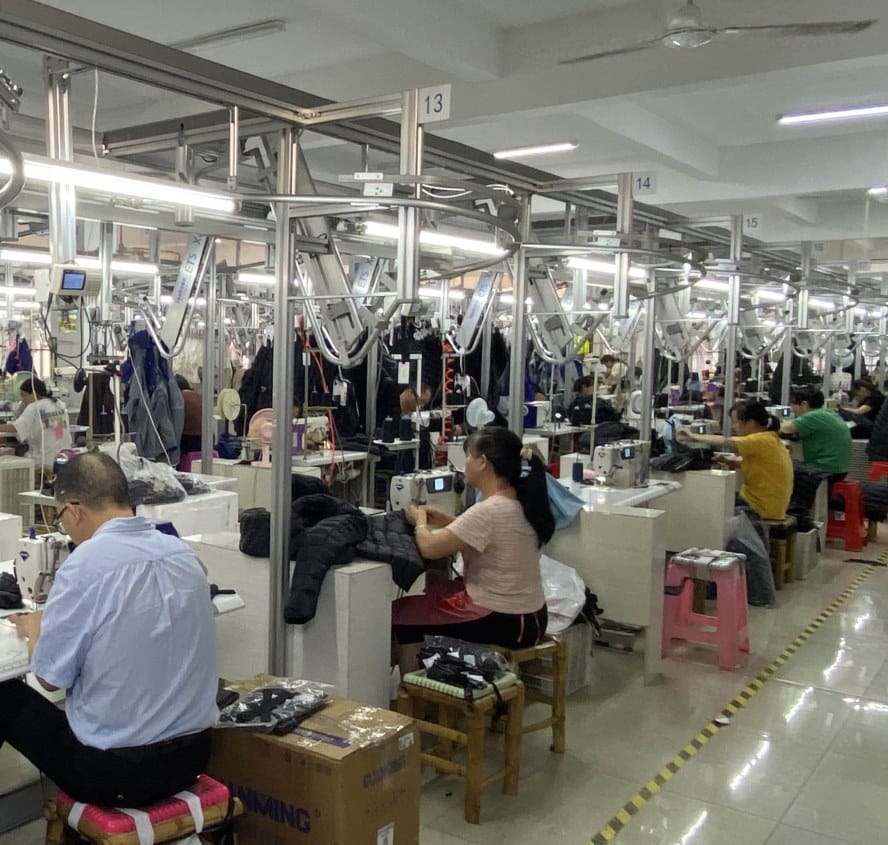
Inspecting Facilities and Processes
When I started working with manufacturers, I realized how important it is to see their operations firsthand. Visiting clothing manufacturing facilities gives you a clear picture of how they work. It’s not just about the machines or the size of the factory. It’s about understanding their processes and seeing if they align with your brand’s values.
During my visits, I always pay attention to a few key things. First, I check the cleanliness and organization of the facility. A well-organized space often reflects a manufacturer’s commitment to quality. Next, I observe how workers handle materials and equipment. Are they skilled and efficient? Do they seem to follow safety protocols? These details matter because they directly impact the final product.
I also like to ask questions while I’m there. For example, I’ll ask about their quality control measures or how they handle unexpected challenges. This helps me gauge their professionalism and problem-solving skills. If you’re serious about finding the right partner, visiting clothing manufacturing facilities is a step you can’t skip.
Running Small Production Trials
Before committing to a large order, I always recommend starting with small-batch production. It’s a great way to test the waters without taking on too much risk. A trial run lets you evaluate the manufacturer’s capabilities and see how well they can bring your designs to life.
When I run a trial, I focus on a few things. First, I review the quality of the finished products. Are the stitches neat? Do the colors match my design? Next, I assess how closely they followed my specifications. Even small deviations can signal potential issues with larger orders.
Another thing I look at is their communication during the process. Did they keep me updated? Were they open to feedback? These trials aren’t just about the products—they’re about building trust and understanding how the manufacturer operates. Small-batch production gives you the confidence to move forward with larger orders, knowing you’ve chosen the right partner.
Tip: Always document your findings during a trial run. It helps you make informed decisions and provides a reference for future orders.
Negotiating Contracts and Protecting Intellectual Property
Drafting Clear Contracts
When I first started working with clothing manufacturers, I quickly learned how important it is to have a solid contract in place. A clear contract protects both you and the manufacturer, ensuring everyone is on the same page. It’s not just about trust—it’s about avoiding misunderstandings that could cost you time and money.
Here’s what I always include in my contracts:
Scope of Work: I define the products, quantities, and specifications in detail.
Pricing: I make sure the cost per unit and any extra fees are clearly outlined.
Payment Terms: I specify when and how payments will be made. Linking payments to delivery and quality standards has saved me from potential headaches.
Lead Times: I set clear production and delivery timelines.
Quality Standards: I include benchmarks for quality and inspection procedures.
Intellectual Property: I add clauses to protect my designs and brand.
Termination Clauses: I outline the conditions for ending the contract.
Dispute Resolution: I specify how disputes will be handled.
I’ve found that linking payments to delivery and quality works wonders. For example, I only release payments if the goods meet my standards and arrive on time. This keeps everyone accountable and ensures I get what I paid for. A well-drafted contract is your safety net when negotiating terms and contracts with manufacturers.
Safeguarding Designs and Brand Identity
Protecting your designs and brand identity is non-negotiable. In the clothing industry, failing to safeguard intellectual property can lead to unauthorized use of your designs. This doesn’t just hurt financially—it can damage your brand’s reputation too. I’ve seen how legal protections can prevent misuse and even open doors for licensing opportunities.
Here’s how I protect my brand:
Patents: I use these to secure exclusive rights for any new inventions or processes.
Trademarks: I register my brand name and logo to keep them safe from copycats.
Copyrights: I protect my original designs and packaging from unauthorized use.
Trade Secrets: I keep proprietary information confidential to maintain a competitive edge.
When I first launched my brand, I conducted a trademark search to ensure my logo wasn’t already registered. It’s also important to monitor and enforce these rights. If someone infringes on your trademark or copyright, you need to act quickly to protect your brand.
Taking these steps has given me peace of mind. I know my designs and brand identity are safe, allowing me to focus on growing my business. If you’re wondering where to find clothing manufacturers, make sure they respect your intellectual property. It’s a crucial part of building a successful partnership.
Building Long-Term Partnerships with Clothing Manufacturers
Fostering Open Communication
Building a strong relationship with your clothing manufacturer starts with open communication. I’ve learned that staying in touch throughout the production process is key. It helps me address any issues before they escalate. I always make it a point to lay out my expectations, visions, and concerns right from the start. This creates a transparent dialogue and sets the tone for a smooth partnership.
Here’s what I do to keep communication flowing:
I maintain regular updates with my manufacturer. Whether it’s through emails or calls, I make sure we’re on the same page.
I stay proactive by checking in at every stage of production. This helps me catch potential problems early.
I encourage open discussions about challenges. This way, we can work together to find solutions.
When both sides communicate openly, it fosters mutual respect and trust. Over time, this trust becomes the foundation for a long-term partnership. It’s not just about solving problems—it’s about building a relationship that benefits both parties.
Planning for Scalability and Growth
As my brand grows, I know my manufacturer needs to grow with me. Planning for scalability is crucial during the production and development transition phase. I focus on strategies that ensure my operations can expand without compromising quality.
Here are some steps I take to prepare for growth:
I embrace agile manufacturing. This allows me to adapt quickly to changing demands.
I integrate technology into my processes. Tools like automation and data analytics help me scale efficiently.
I diversify my revenue streams. This reduces risks and keeps my business stable.
I prioritize customer needs. By listening to feedback, I can create products that drive growth.
I build strategic partnerships. Collaborating with reliable manufacturers ensures sustainable expansion.
Scalability isn’t just about producing more—it’s about maintaining consistency as you grow. A solid partnership with your manufacturer makes this possible. Together, you can navigate challenges and ensure your brand thrives in the long run.
Tip: Always discuss your growth plans with your manufacturer. When they understand your vision, they can align their capabilities to support your goals.
Finding the right clothing manufacturer is one of the most important steps for any startup. It’s not just about producing clothes—it’s about building a foundation for your brand’s success. From defining your product line to ensuring quality and timely delivery, every decision matters. A strategic approach can save you time, money, and stress while setting your brand up for long-term growth.
For startups, challenges like limited budgets, small production runs, and communication barriers can feel overwhelming.
That’s why I always recommend working with a trusted partner like Identity Custom Clothing. They offer tailored solutions that help startups create custom apparel, connect with their audience, and adapt to market trends. Whether you’re starting small or planning for growth, their expertise and flexibility make them an ideal choice.
Ready to bring your vision to life? Take the first step today. Collaborate with Identity Custom Clothing to craft apparel that tells your brand’s story and stands out in the market. Let’s turn your dream clothing line into reality!
FAQ
How do I know if a manufacturer is the right fit for my startup?
I always start by reviewing their portfolio and requesting samples. This helps me see if their quality matches my expectations. I also ask about their experience with startups and check their communication style. A good fit feels like a partnership, not just a transaction.
Tip: Look for manufacturers who align with your brand’s values and vision.
What’s the best way to handle minimum order quantities (MOQs)?
I recommend starting with manufacturers offering low MOQs, like Identity Custom Clothing. This lets you test your designs without overcommitting. Always confirm the MOQ upfront and plan your budget accordingly. It’s a great way to manage risks while scaling your business.
Should I choose a domestic or international manufacturer?
It depends on your priorities. Domestic manufacturers offer faster communication and shorter lead times. International ones often provide lower costs and specialized skills. I weigh the pros and cons based on my budget, timeline, and product needs.
Note: Consider shipping costs and customs when working with international manufacturers.
How can I protect my designs from being copied?
I always secure my intellectual property through trademarks, copyrights, and patents. These legal protections safeguard my brand and designs. I also include confidentiality clauses in contracts with manufacturers to prevent unauthorized use.
Pro Tip: Regularly monitor your brand to catch and address infringements quickly.
What should I do if production delays occur?
I stay proactive by maintaining open communication with my manufacturer. If delays happen, I ask for updates and adjust my timelines. Having a backup plan, like extra inventory or alternative suppliers, helps me stay prepared.
Reminder: Always build buffer time into your production schedule!
